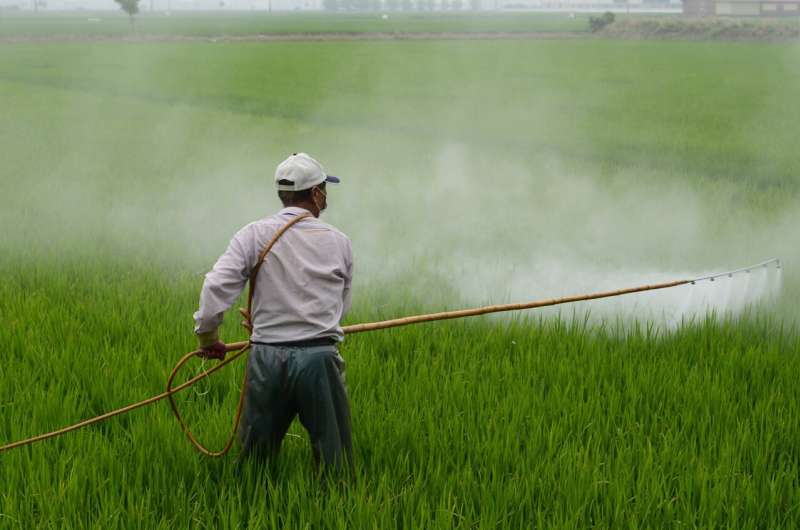This article has been reviewed according to Science X's editorial process and policies. Editors have highlighted the following attributes while ensuring the content's credibility:
fact-checked
peer-reviewed publication
trusted source
proofread
Study: 40 metric tons of bee-harming neonics a year flow through Asia's longest river

More than 40 metric tons of bee-harming neonicotinoid insecticides, known as neonics, have been estimated to be flowing through Asia's longest river every year, according to a new study published by researchers in Scotland and China.
The study, led by a specialist at The James Hutton Institute, alongside scientists at Northeast Agricultural University, Harbin, and Wuhan University of Technology, Wuhan, China, tested a 200 km-long mid-section of the Yangtze River for concentrations of 11 different neonics at 18 locations. The work is published in the journal Chemosphere.
A third of samples collected contained levels of the insecticide that exceeded "chronic ecological risks thresholds," while agricultural use was identified as the main source. The most common neonic found was imidacloprid, of which China produced 23,000 metric tons in 2016, says the study authors.
Based on the chemical concentrations found, which would have come from the section tested, but also upstream of it and associated tributaries, the study estimated that 40 metric tons of the 11 neonics were flowing through the river annually.
Professor Zulin Zhang, senior research scientist at the Hutton and main-author of the study, says, "The findings from this study indicate a need for a better understanding both of the risks these chemicals pose to the environment and what we can do to make sure they do not undermine the health of the Yangtze River Basin, the world's third longest river, which supports more than a third of China's population (>400 million people)."
Neonicotinoids were developed in the 1980s and gained widespread use at a global scale. However, a number of countries have banned them, including the EU, which banned outdoor use of the three main neonics, including imidacloprid.
Other countries, including Sweden, the U.S., Canada and the Netherlands, also have water quality guidelines for neonicotinoids with limits on concentrations.
There is also work ongoing to develop alternatives, which pose less risk, to the environment, as well as sustainable Clean-up technologies for emerging contaminants (for example, adsorption and advanced oxidation processes) are being potentially developed to remove these chemicals from waters once they enter the aquatic environment, adds Professor Zhang.
More information: Shang Gao et al, Spatiotemporal variation, fluxes and risk evaluation of neonicotinoid insecticides within the midsection of Yangtze River, China: An exploration as ecological protection threshold, Chemosphere (2024). DOI: 10.1016/j.chemosphere.2024.141983
Journal information: Chemosphere
Provided by The James Hutton Institute



















